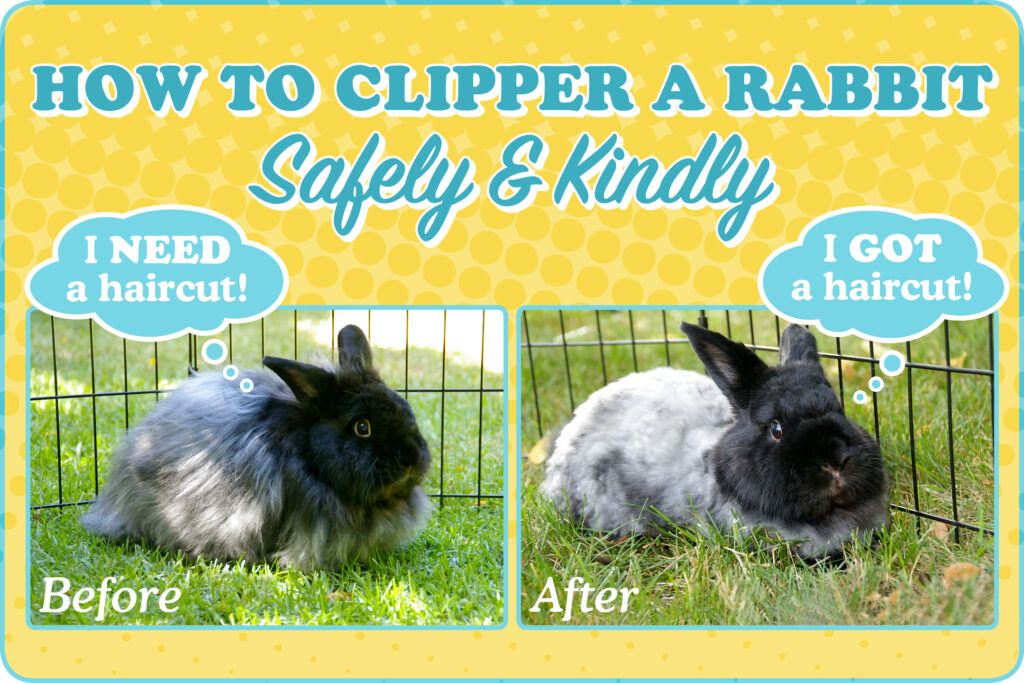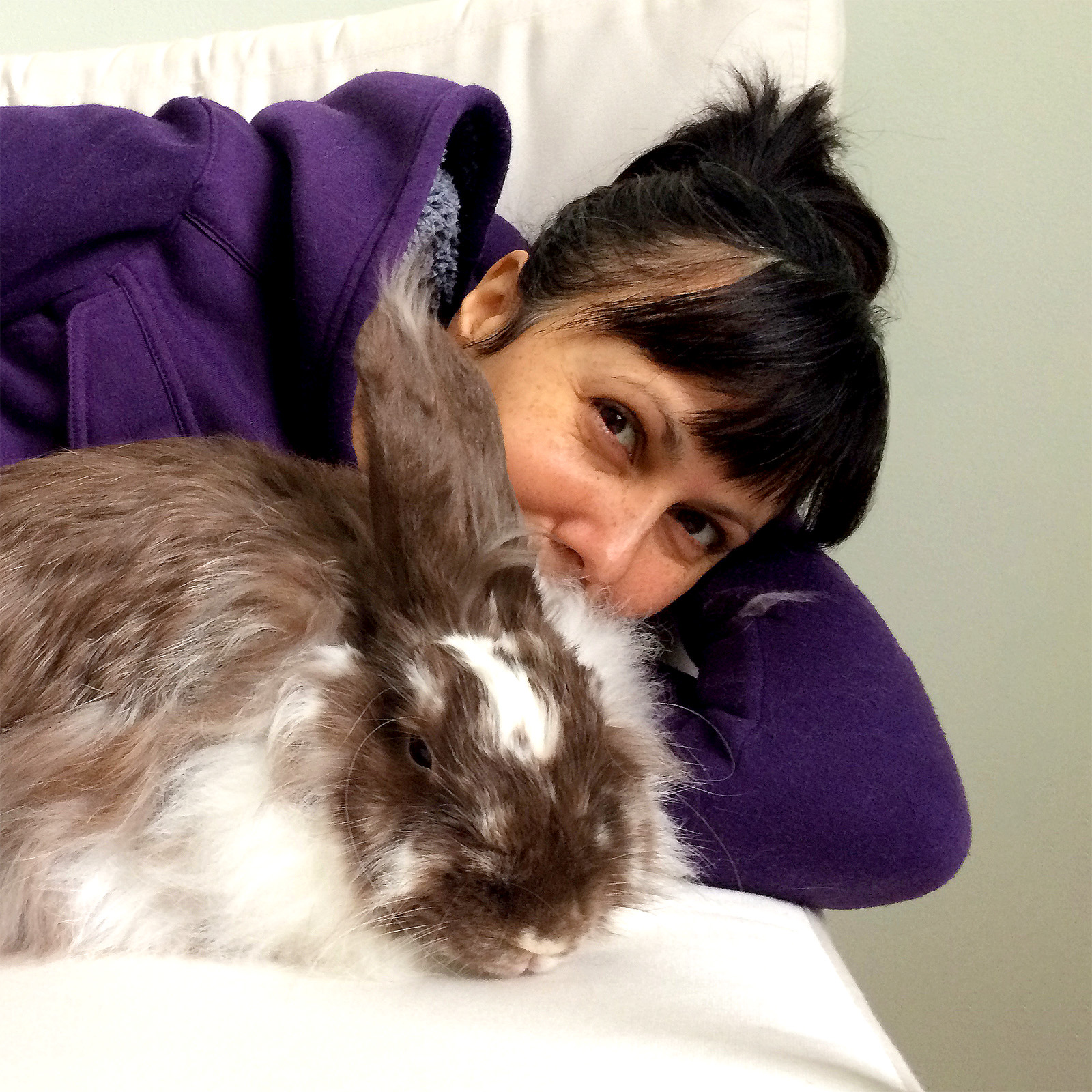Introduction
If you search online for instruction on how to use a clipper on a long-haired rabbit you are sure to find videos and articles in which the rabbits are not treated with care or kindness. This guide provides instructions on how to clip a long-haired rabbit in a kind and gentle way. Pair the information in this guide with the companion video, and our general grooming article for a complete beginner’s guide.
This advice is for rabbits whose fur is already in fairly good condition. It is not intended for rabbits who are badly matted or felted. If you have a badly matted rabbit, please make an appointment with a rabbit-savvy veterinarian for help. To remove fur in that condition, the rabbit may need sedation and will need someone with a lot of experience operating the clipper.
Long-haired rabbits have fur that grows much longer than other rabbits, and that fur must be maintained to keep the rabbit comfortable and healthy. We maintain that long fur with either regular combing and brushing to keep it free flowing and free of mats or by using scissors or mechanical clippers to shear off the fur — most long-haired rabbits require some of both.
Long-haired rabbit fur forms mats very quickly. Mats are more than a nuisance, they mark the beginning of a significant downward spiral for a rabbit’s quality of life. Mats become felted wool, which can seriously limit a rabbit’s range of motion and ability to move freely. Mats can also pull and pinch the skin, causing constant discomfort. A badly matted rabbit will be constantly hot and overheated. Simply put — mats are an enemy of a long-haired rabbit.
The parts of the body where a rabbit has the most movement are the areas where a long-haired rabbit will develop mats the fastest. These are called “high friction” areas. They are:
- under their chin and on their chest
- on the nape of the neck at the back of the head
- on their feet and around their legs
Long-haired rabbits don’t all share the exact same fur texture or even the same density of fur. Some have very thick, wooly fur. Others have fine, silky fur. Rabbits with thick, wooly coats are harder to maintain and ideally will be clipped short approximately every 45 days. Those with fine, silky fur are easier to maintain. For those rabbits, you may choose to maintain their fur via regular brushing and only clip their fur short during the summer for their comfort.
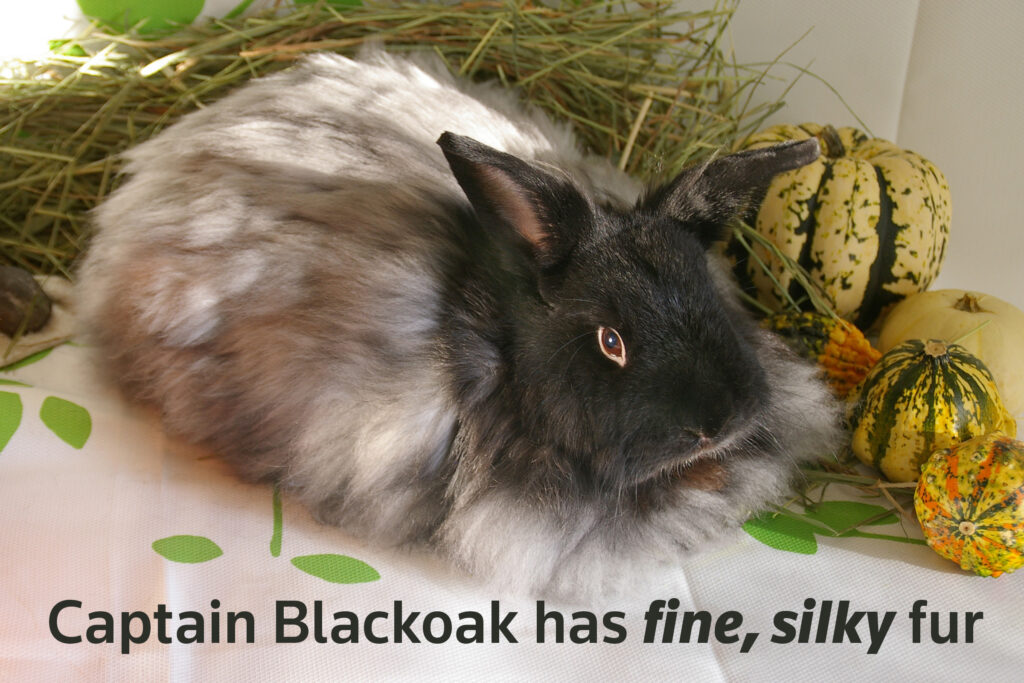
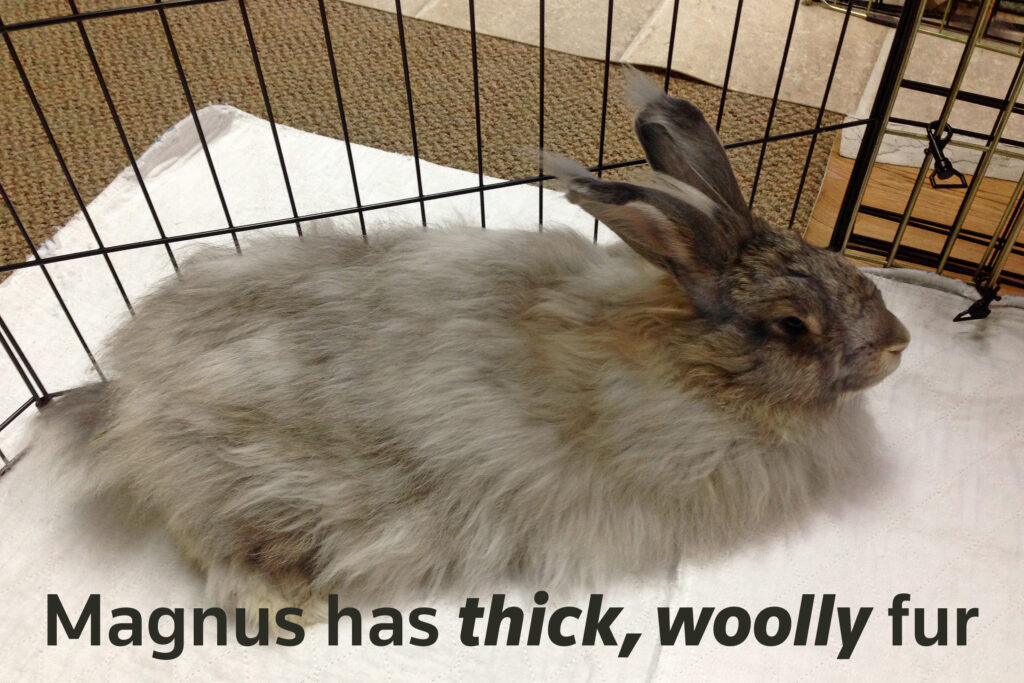
Whatever their fur texture and density there are three compelling reasons to keep your long-haired rabbit in a short haircut:
1. It keeps them cool and comfortable
2. Having less fur on their bodies (and being free of mats) means a greater range of motion, allowing them to be more active and athletic. Exercise is important for their overall health and greatly improves their quality of life.
3. Having less fur also reduces the amount of fur they will lick and ingest. Less fur going into the stomach means fewer health problems such as blockages or gut slowdowns.
Getting Started
Using a clipper on a rabbit REQUIRES two people. One to operate the clipper and one to hold the rabbit.
If you have access to a veterinarian who regularly works with rabbits, I strongly recommend that you make an appointment so they can show you their best rabbit-holding positions and their recommendations for blade handling. Ask what their favorite clipper is and what blades they use. You might meet with the vet tech who has the most experience handling rabbits and operating a clipper at the clinic. This person can be a valuable resource for helping you to get comfortable taking care of your own rabbit’s long fur.
Even clippers that claim to be quiet aren’t really quiet, and the noise can be scary for a rabbit. The first thing to do is to help your rabbit get used to the sound of the clipper by turning it on around your rabbit for a few minutes every day. I recommend you do this for about a week.
Have a backup plan. When I first started using a clipper, I was really afraid that I might accidentally cut my bunny. Thankfully that never happened. However, the first several times I made sure that when I was clipping my veterinary clinic was open. That way, if my bunny needed veterinary help we could get it quickly.
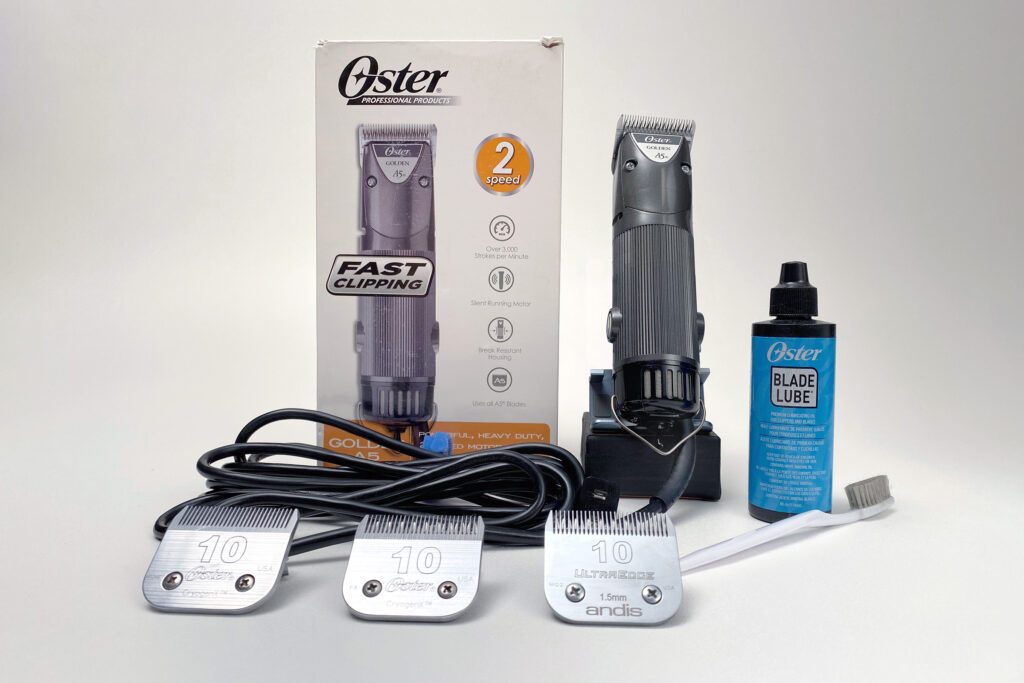
Set Up Your Workspace
You’ll want to take care of your back as you work, so find a table height that works for you. I prefer a folding shop table at full height extension.
For everyone’s comfort, pad your work surface with fleece blankets or towels. I like to include a garden kneeling pad under my fleece blankets for extra cushion on my helper’s elbows. Finally, you’ll be using a rolled fleece bolster to help support your bunny in certain positions.
Clipper & Blade Handling
There are a number of things to know about using a clipper. One of the most important things to know is that blades get hot with use. As you are working you’ll want to put the blade against your own skin every few minutes so you can keep track of how hot your blade is getting. You definitely don’t want to put a hot blade near your rabbit’s skin. When the blade gets too warm you can either swap it out for a new blade or give your rabbit a break and pop that blade into the ‘fridge or freezer for a cool down.
Blades also get dull and it happens fairly quickly. You’ll probably get about three or four full haircuts out of a blade before it needs professional sharpening. A dull blade will catch the fur and tug and pull at your rabbit’s skin, which is why it’s vital to find and regularly use a professional sharpening service.
On the topic of of dull blades: cutting through mats causes blades to heat right up and dulls them down really quickly. Areas that are slightly tangled, or delicate/difficult can be dealt with by first using a small comb. Combs are better than the clipper for small mats and tangles — use the comb to break up the tangles and then follow up with the clipper. Also use a comb in delicate areas like around the tail and pelvis without using the clipper at all.
Your right or left-handedness will make some areas of your bunny’s body easier to clipper and others more difficult. Don’t worry, you will get better with practice.
98% of the time we want to move the clipper blade with the grain of the fur, not against the grain. Only move against the grain or across the grain if you can’t get at that fur any other way. We also hold the blade parallel to the rabbit’s skin at all times. Never angle downward, which would point the moving cutting parts of the clipper directly at the rabbit’s skin.
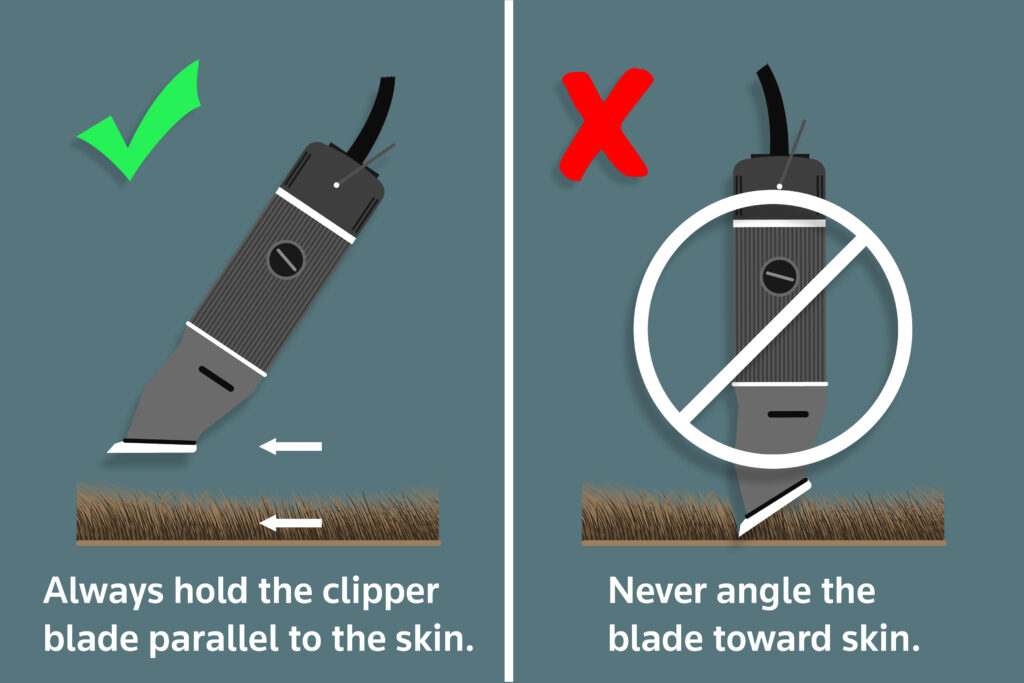
Use a clipper blade guard in delicate areas. A clipper blade guard is an important and useful tool that will help reduce the chances of accidentally cutting your rabbit. Keep in mind that even when using a clipper blade guard, you can still catch loose skin, so caution is still needed. I recommend you use a clipper blade guard on these areas:
- belly
- pelvic region
- under chin
- chest
- over shoulders near the back of neck
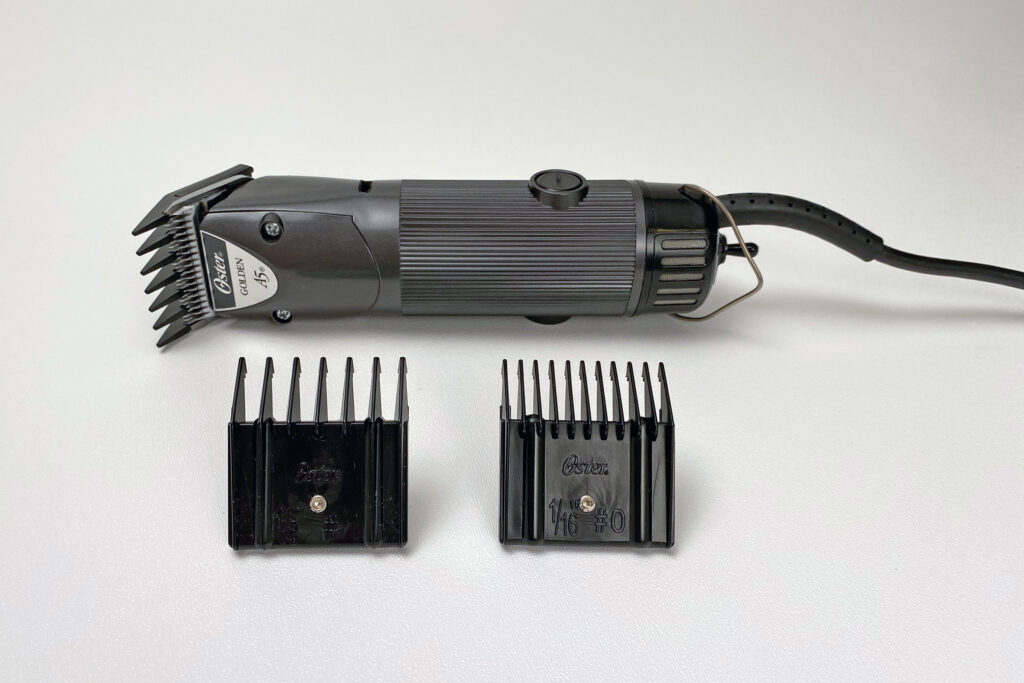
Rabbit Handling
Did you know that a rabbit’s tail is a part of their spine? It may seem like it’s just a ball of fluff but there are indeed spinal bones inside the tail. On a long-haired rabbit with a lot of fur it can be difficult to precisely locate the tail. But when we are removing fur we must be aware of where the tail is so we don’t accidentally cut it. While working, cover the tail with your free hand or hold it so it is never in danger of being accidentally severed.
Likewise, if your rabbit has nipples/teats that are not flat to the skin, stop and identify where each individual teat is. You’ll want to use a clipper blade guard in this area. Again, this is to help prevent the nipple from being cut. You can also physically cover each individual teat with your finger or thumb as you move the clipper slowly down the belly so you are aware of where they are at all times.
Almost all rabbits have some areas of loose skin. Where that loose skin is located may differ on each rabbit, but some common areas of loose skin are the dewlap, over the shoulders, at the nape of neck, and the belly. When you are using a clipper use your free hand to stretch that loose skin taut. By gently stretching loose skin nice and tight you are preventing that skin from getting caught up in the clipper blades. Rabbits also have a web of skin under their arms — their ‘armpit’ area. Never try to cut close to the underarms or you will catch that web of skin.
When using the clipper around the shoulders have your helper move the rabbit’s ears out of the way to protect them. Use a small comb and scissors instead of the clipper for the area directly around the rabbit’s ears. You can also put the clipper blade guard to use in this area. You’ll want to take the same approach all around the pelvis — exercise extreme caution, protect by using a clipper blade guard, use your free hand to physically cover delicate areas, and consider using a small comb instead of the clipper in that area.
A few words on using scissors:
- buy a small scissors with rounded blade tips
- always identify where your rabbit’s skin is
- Most Important — If you don’t know where their skin starts don’t start cutting until you do!
Haircuts are stressful for rabbits. Even the most easy going rabbit is glad when the haircut is done. So give regular breaks that will allow your rabbit to relax and recover. I recommend working for 10 or 15 minutes and then taking a break for 15 minutes. Your bunny will also appreciate a small treat after each work period. Breaks give your blade time to cool down too.
Under the chin and the chest are the most likely areas to have mats. These mats are caused by movement/friction. This area is the most difficult to trim because the body position it requires is especially disliked by rabbits. It is also a delicate area because the rabbit’s jugular veins, airway and esophagus is right there, under our hands. So when your bunny is in this position observe these rules:
- use a clipper guard so you won’t accidentally cut the jugular veins!
- protect the airway by not tilting the head too far up into the air
- keep the bunny’s neck and airway comfortable
- protect your rabbit’s esophagus by making sure you are using the bones along their jaw for support
- don’t press your fingers into their throat — keep fingers on the jaw bones instead
If this area is taking a long time to clip it is important to give your bunny breaks and extra love because of the increased stress of working on this area.
As you are changing positions or getting into upright holds always support the rabbit’s spine. For all the various positions required for clipping a rabbit, have your helper provide gentle resistance to the hind legs/feet so the bunny can’t kick and hurt themselves.
If your long-haired rabbit is older, or it’s particularly cold outside, or he’s immune compromised in some way, you may notice that your bunny is susceptible to the cold after getting a haircut. A clipper blade guard is your friend in this situation because it will allow you to control the length of the haircut. Use a clipper blade guard that will leave enough fur length for a medium haircut instead of a short haircut. If you already gave a short haircut and your bunny is cold provide warm spaces such as fleece blankets, a bolstered bed, or a rabbit safe heating pad placed under a blanket until their fur grows back.
In Between Haircuts
Ideally a long-haired rabbit will get a short haircut approximately every 45 days. In-between haircuts you still need to comb some of the furry areas as they grow out. The high friction areas will start to get matted and you’ll be in for an unpleasant surprise if you don’t comb in-between haircuts. The areas you need to comb in-between haircuts are:
- the nape of the neck and the back of the head
- the pelvic region
- the fur around their feet
- don’t forget to gently comb their tail
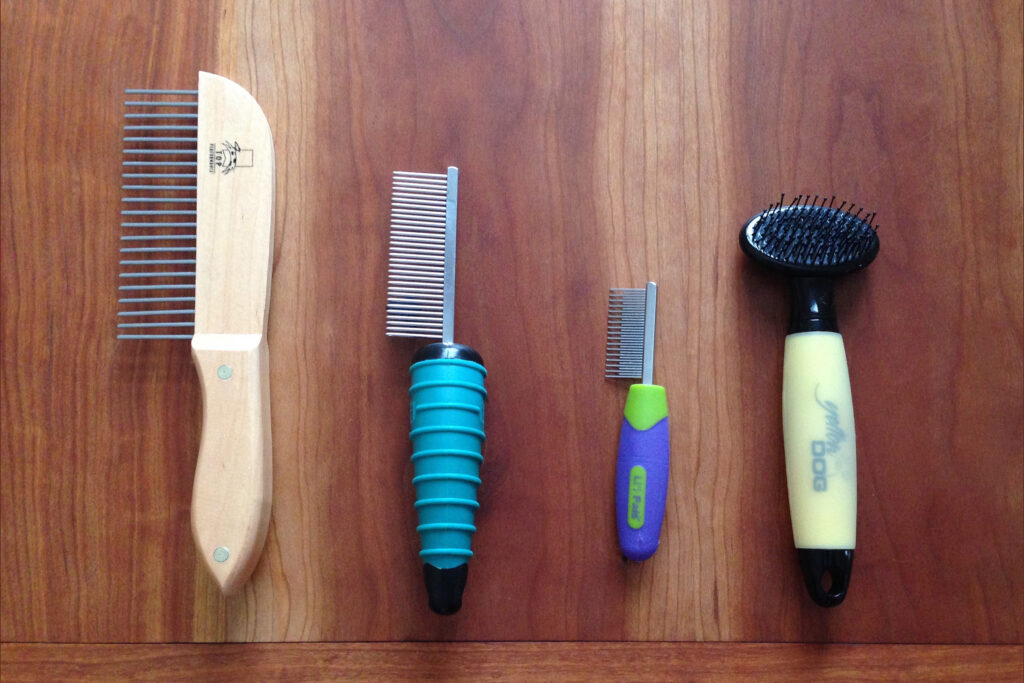
Closing Thoughts
Consult with your rabbit-savvy veterinarian before you get started. Don’t be in a hurry. Go slowly and use caution. Take breaks during a haircut — it’s best for everyone if you do. Be gentle with yourself and with your rabbit. It will take some time for both of you to get used to this new activity.
This is a skill you can learn. Practice by doing. Each time you use the clipper your technique, speed, and confidence will improve! Good luck!
Video: How to Clipper a Rabbit Safely & Kindly
Further Reading
©Copyright Amy Ramnaraine. All Rights Reserved. Republished with the permission of the author.
